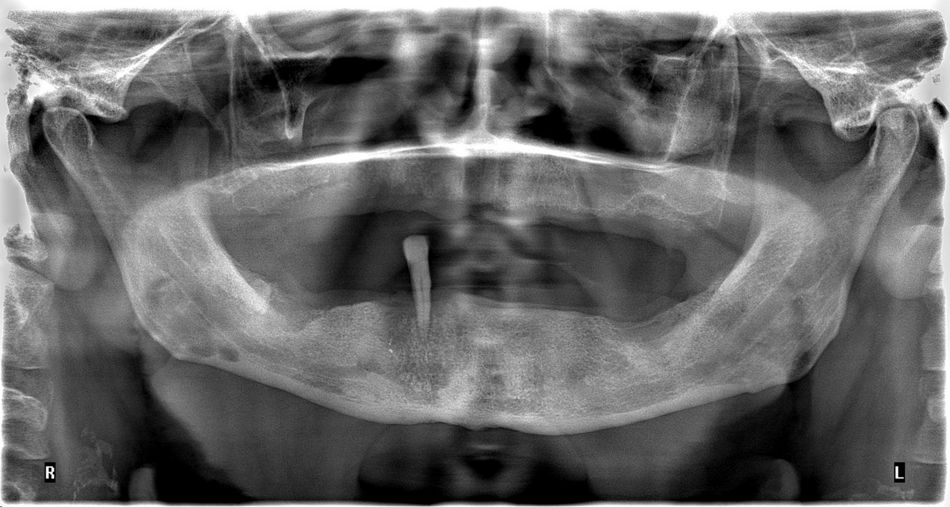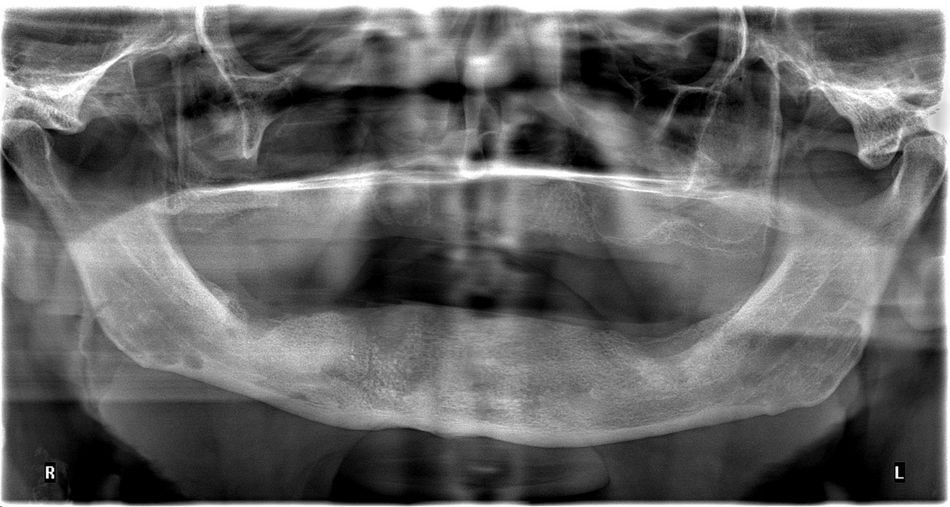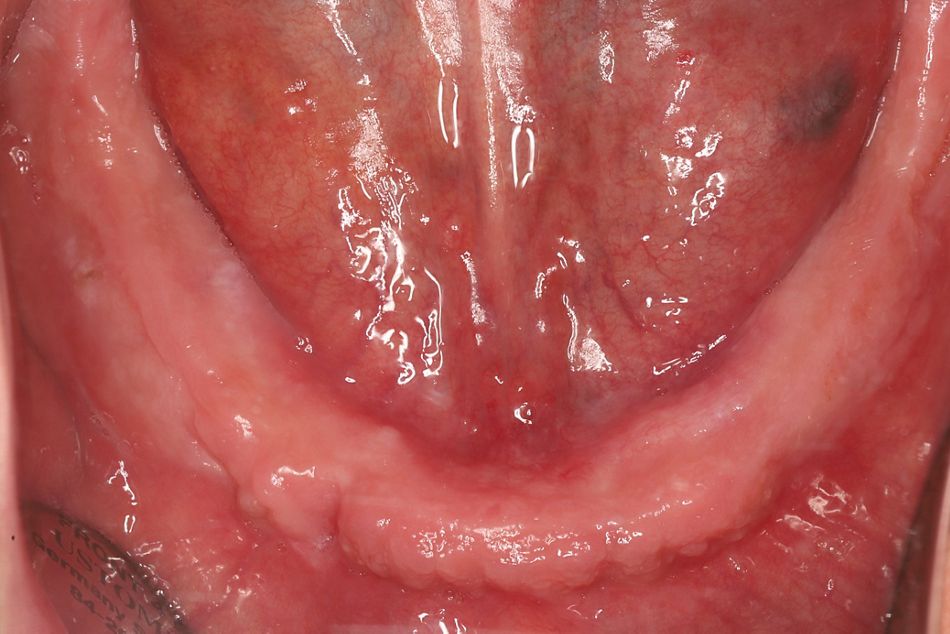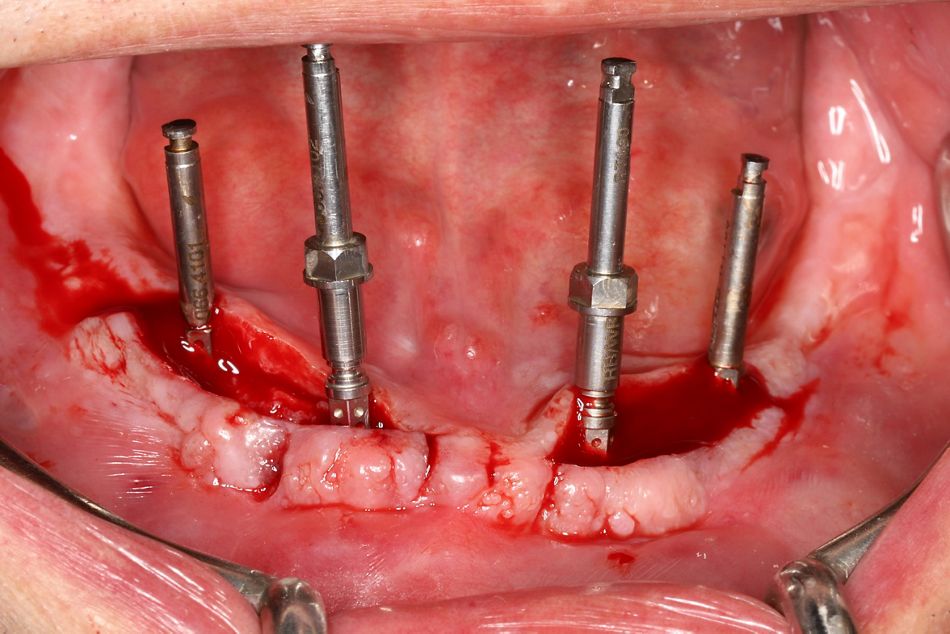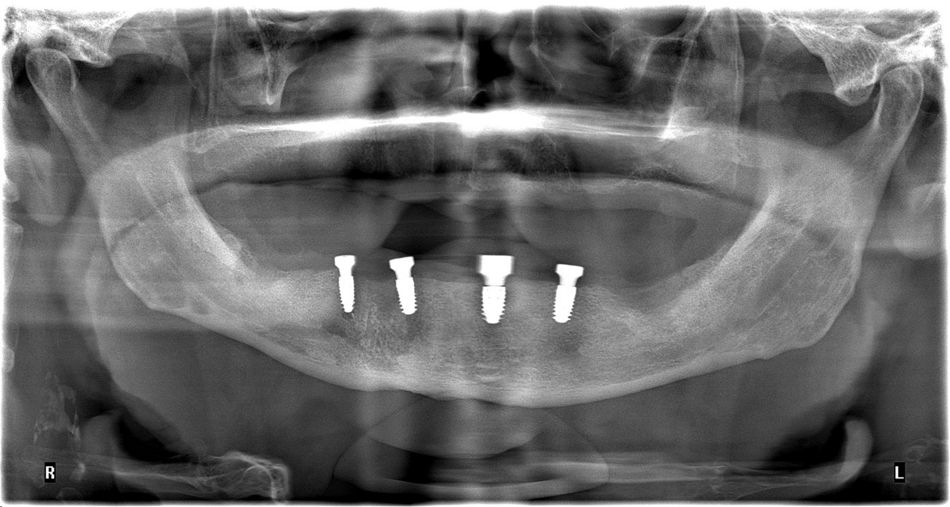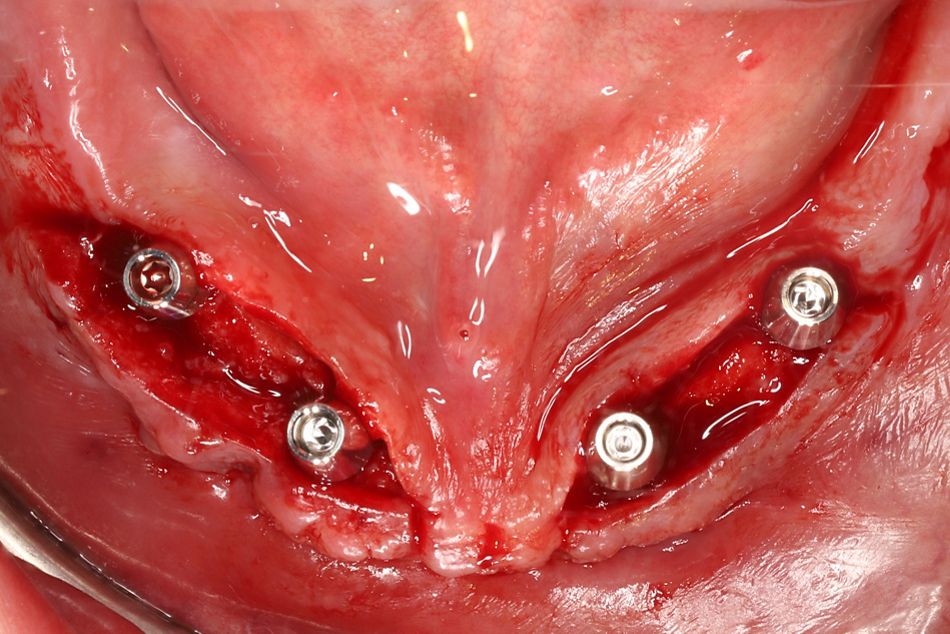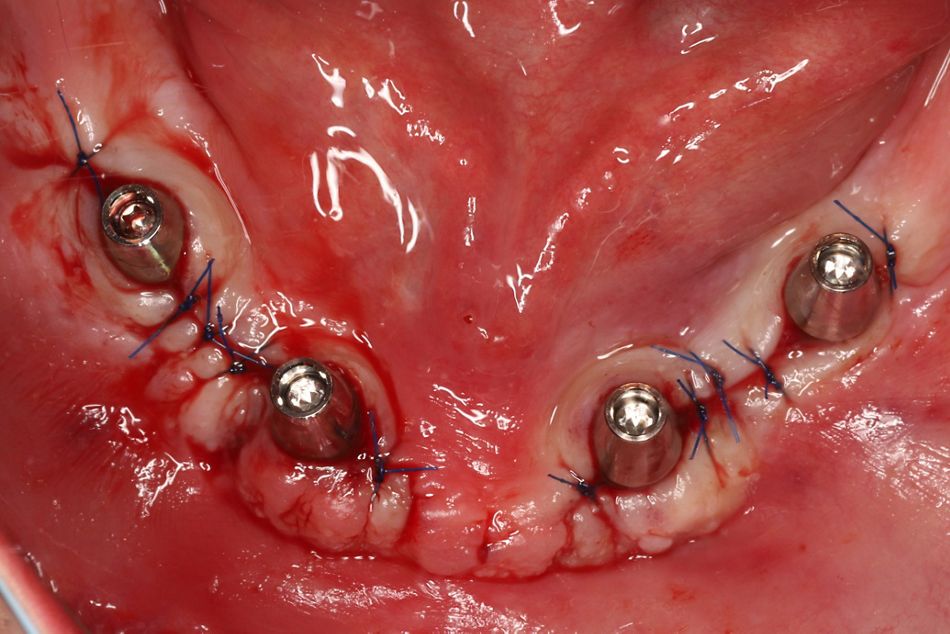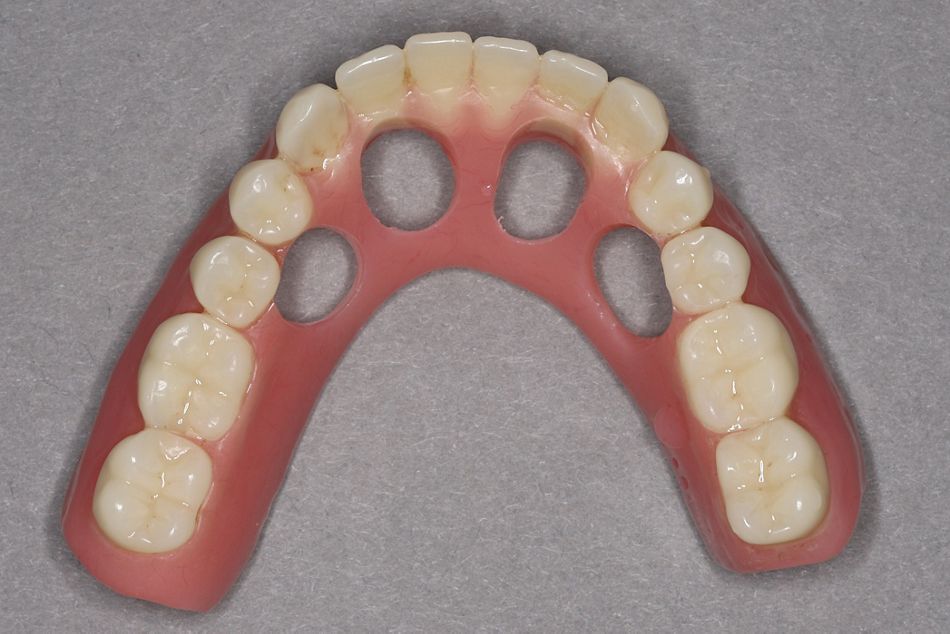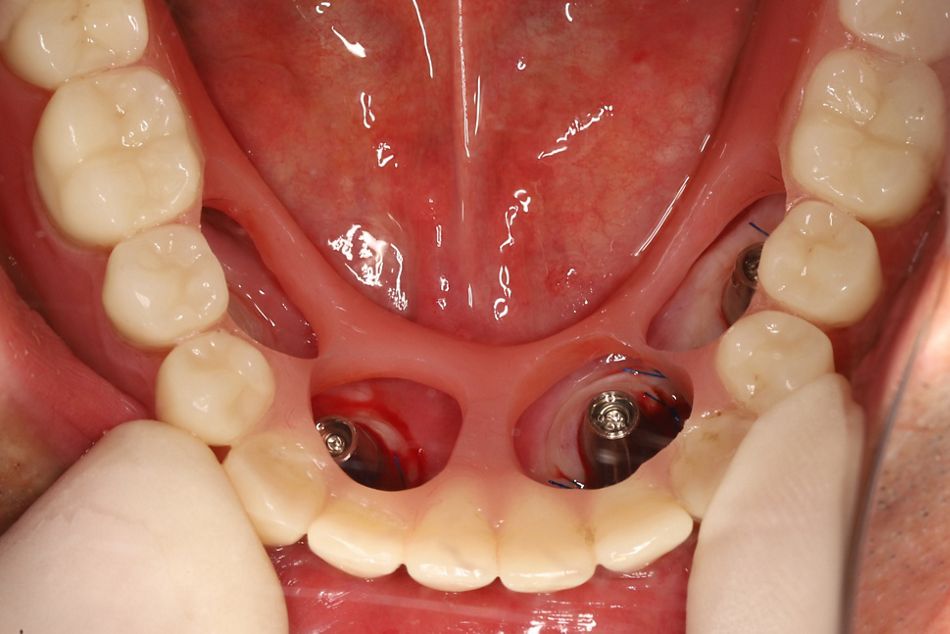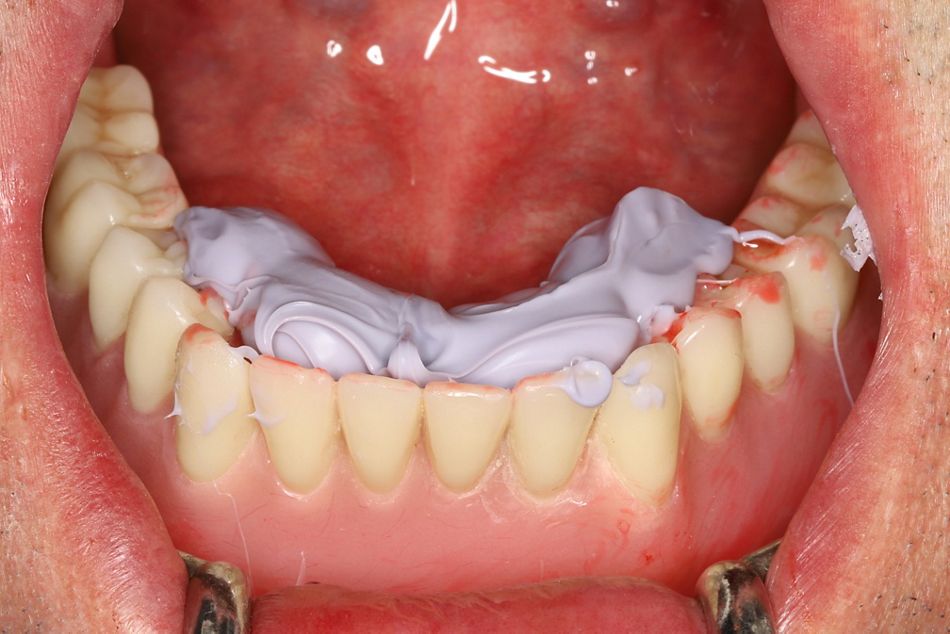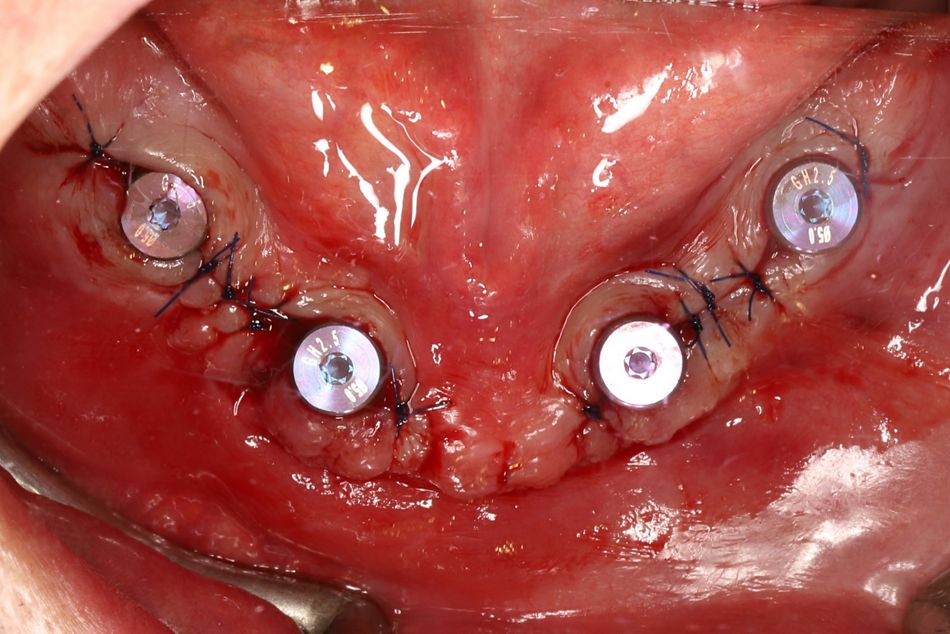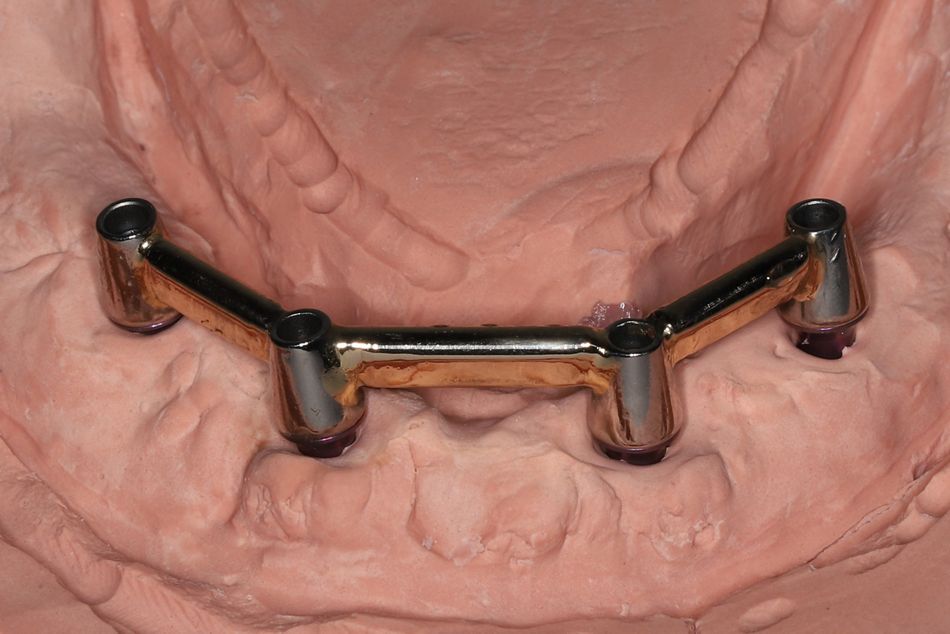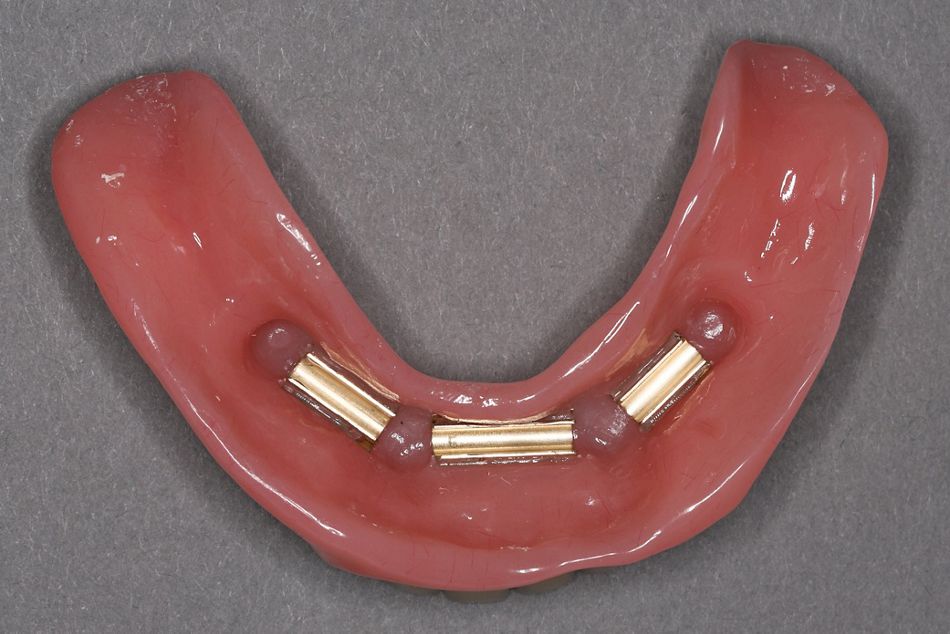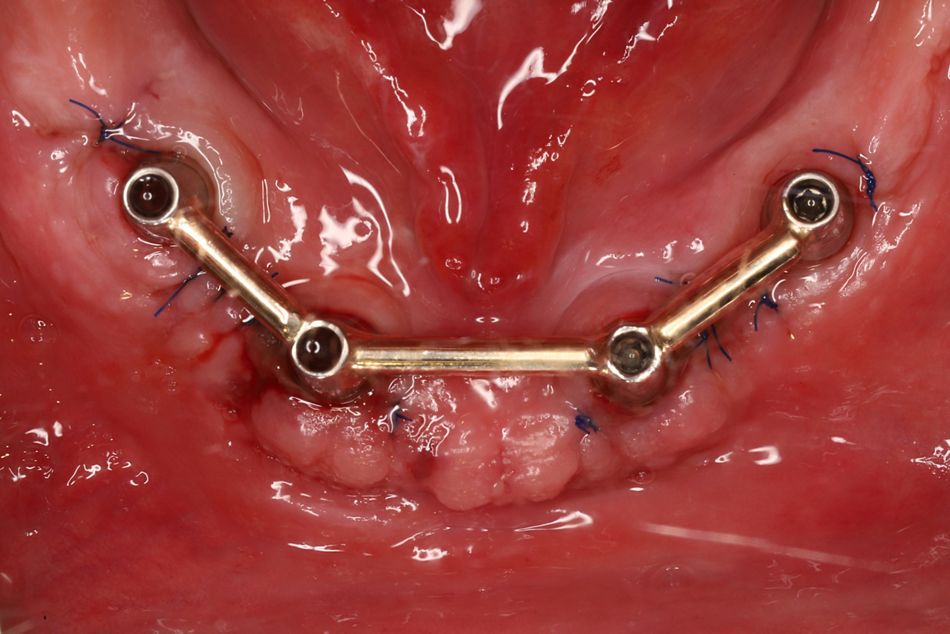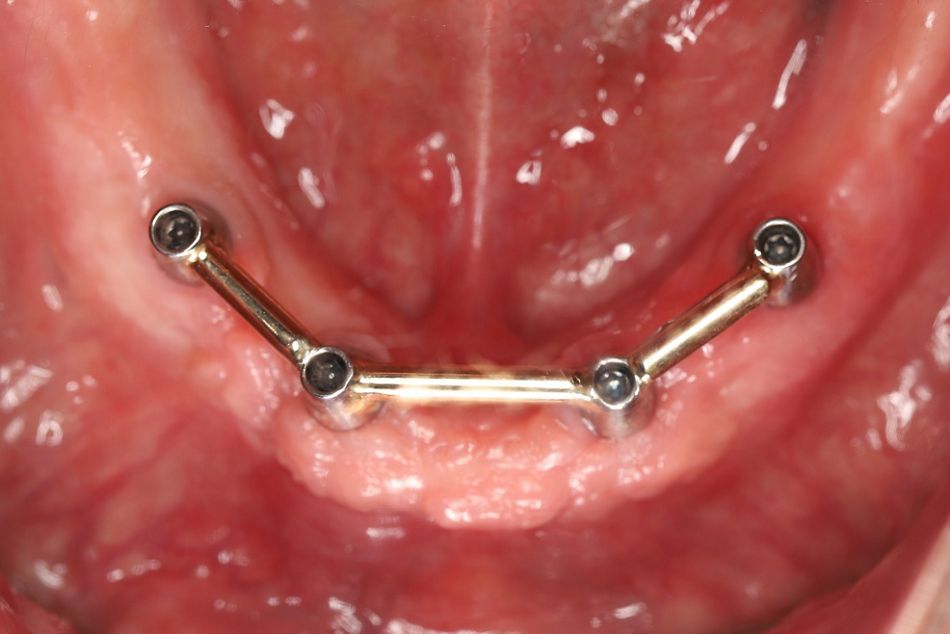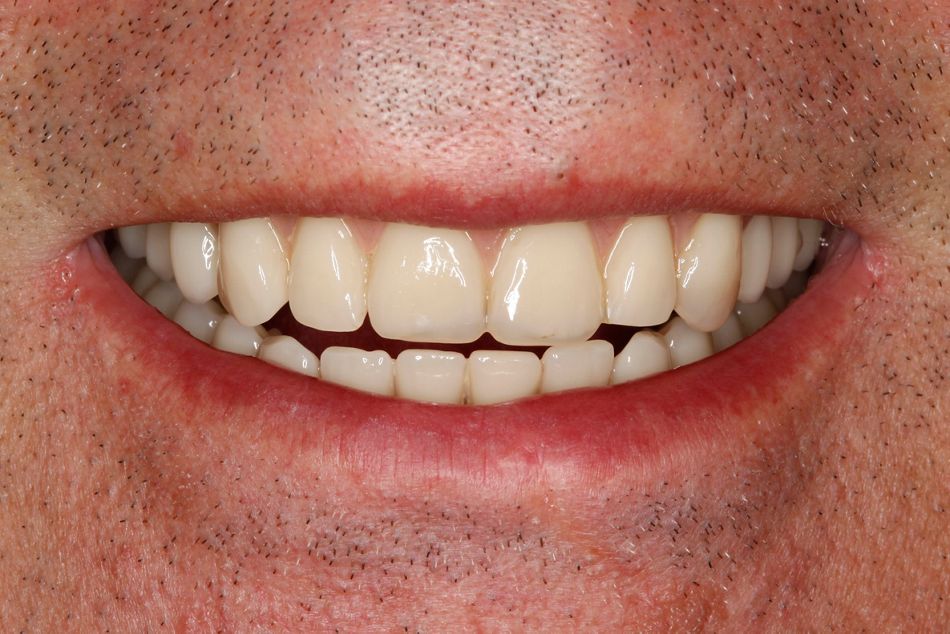Initial situation
The patient, a 61-year-old man, arrived at our practice reporting an almost completely edentulous mandible. He stated that this situation had become untenable from both a functional and aesthetic perspective. He was therefore seeking for a full arch restoration. His dental history revealed the loss of two fixed bridges on natural teeth due to periodontal disease. In the clinical examination, only tooth 43 was present. It was also periodontally compromised to a great extent. His medical history was unremarkable and did not show any contraindications for implant placement.
Treatment planning
Following the radiographic assessment (Fig. 1), tooth 43 was extracted and a removable full mandibular denture was fabricated. Panoramic radiographs taken nine weeks after extraction showed a well-healed extraction socket in the region of 43 and vertical bone availability (Figs. 2 - 3). Four 8 mm long implants were selected for insertion in the locations 35-32-42-45, in order to support a U-shaped Dolder bar (macro). BLX Implants Ø 3.75 mm were chosen as they allow for the achievement of optimal primary stability and immediate loading.
Surgical technique
The surgical procedure was performed 11 weeks after extraction under local anesthesia. A crestal incision was made in each mandibular quadrant in order to raise a mucoperiosteal flap. The four implant beds were prepared according to the manufacturer's instructions for the insertion of the Straumann® BLX Implants (Roxolid®, SLActive®, Ø 3.75 RB/8 mm) up to drill no. 3 (Ø 3.2 mm). Primary stability was obtained for the four implants. The torque applied was greater than 35 Ncm in each case, thus allowing for immediate loading (Figs. 4 - 5).

